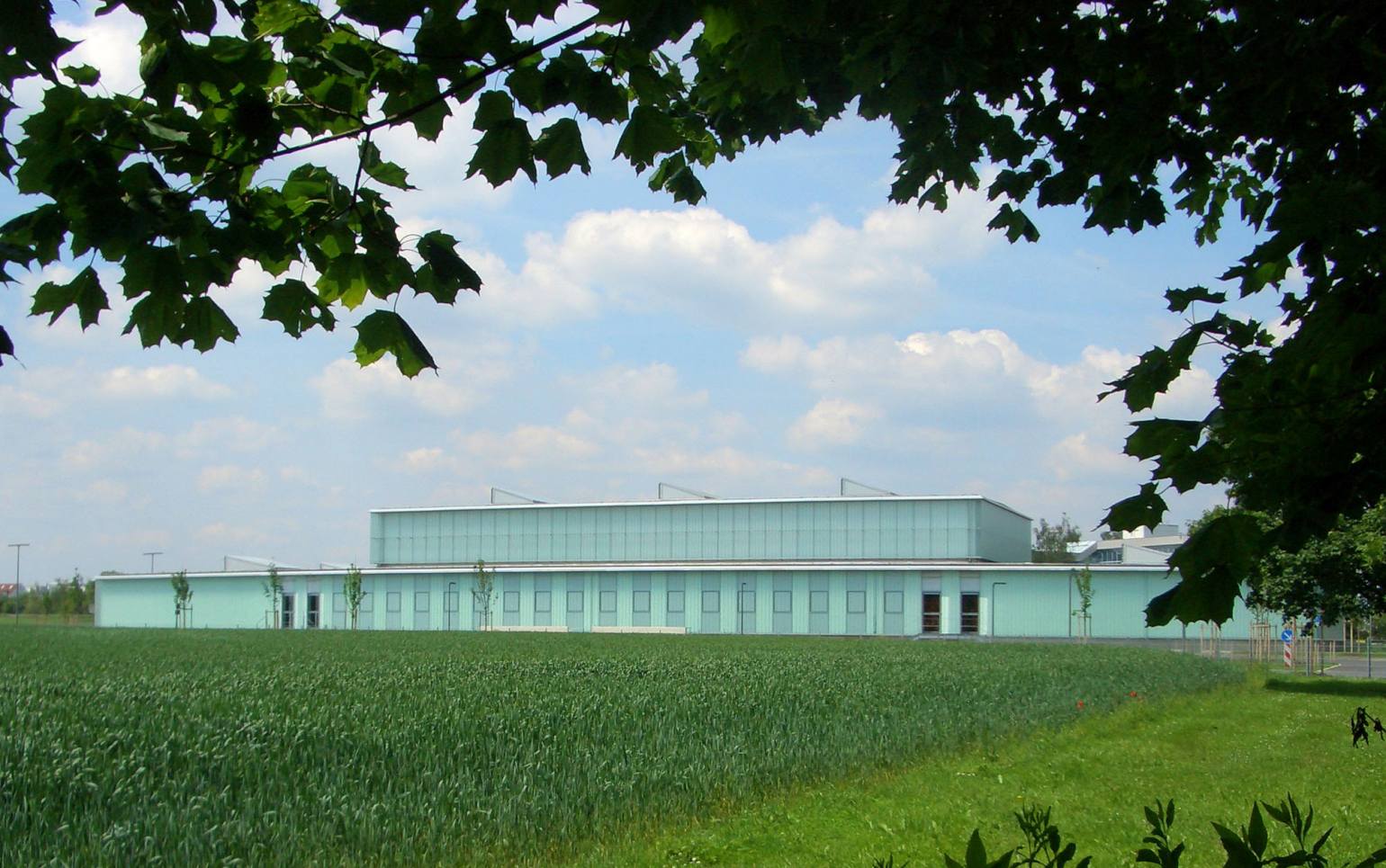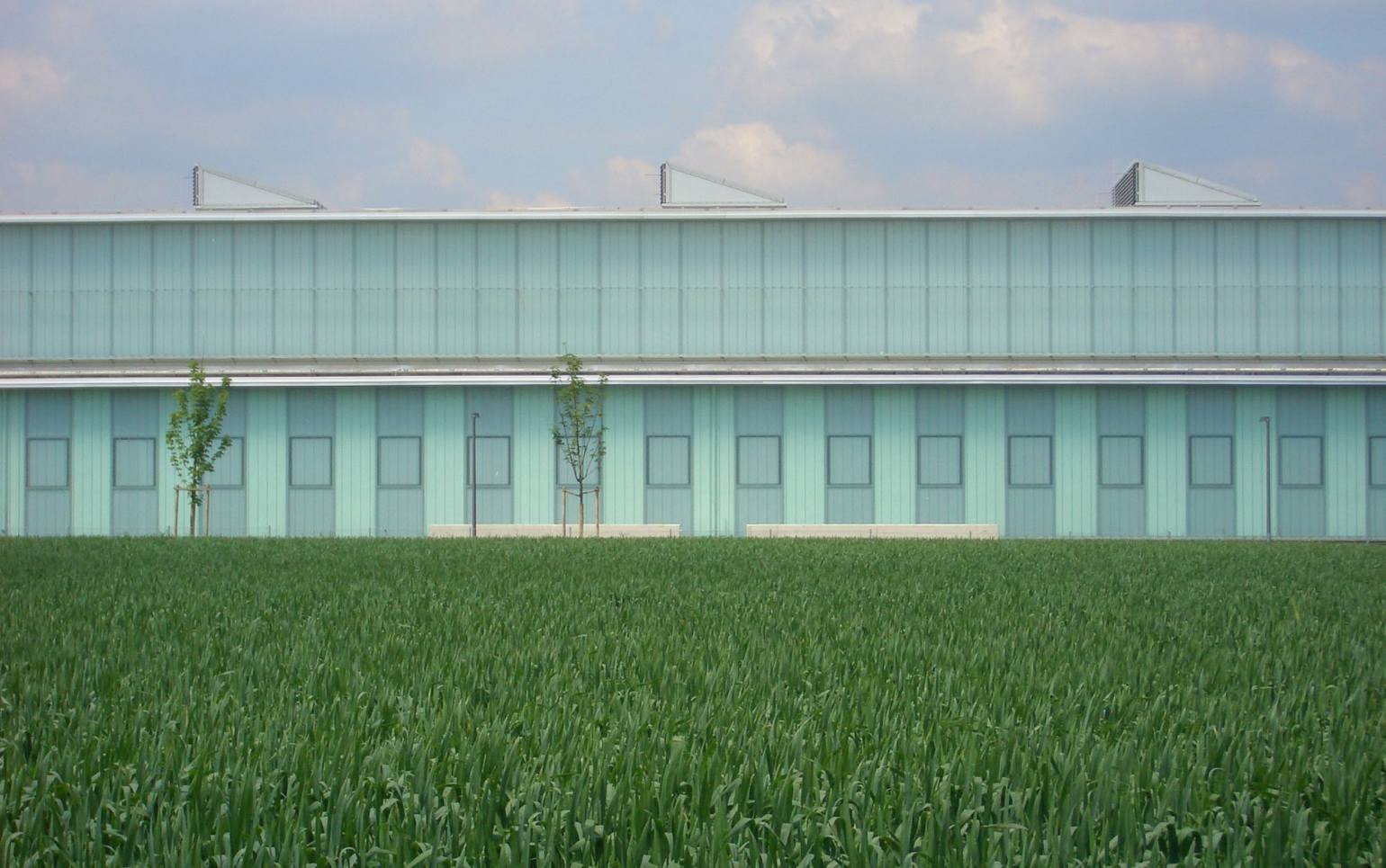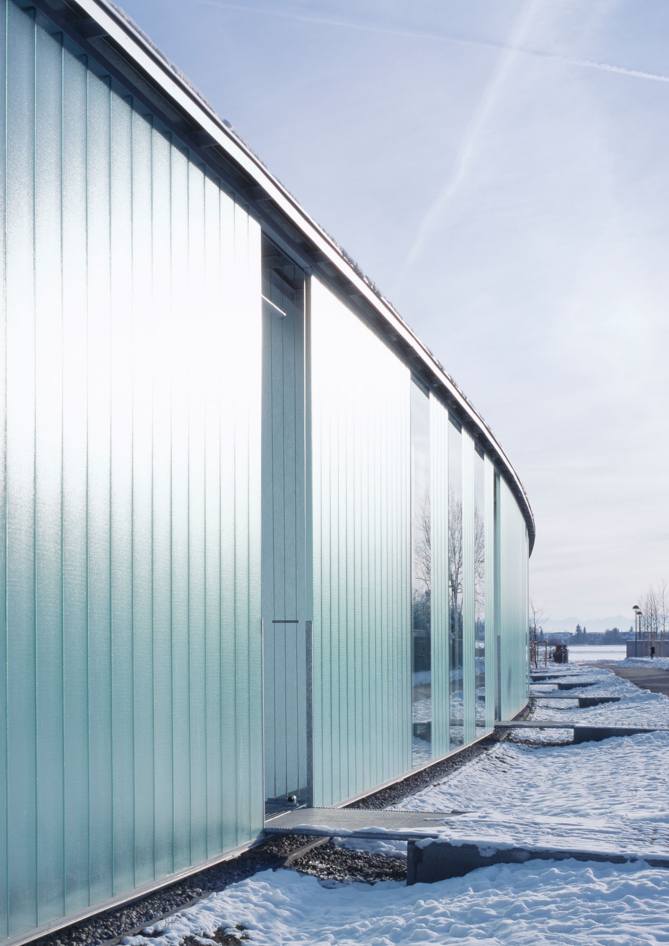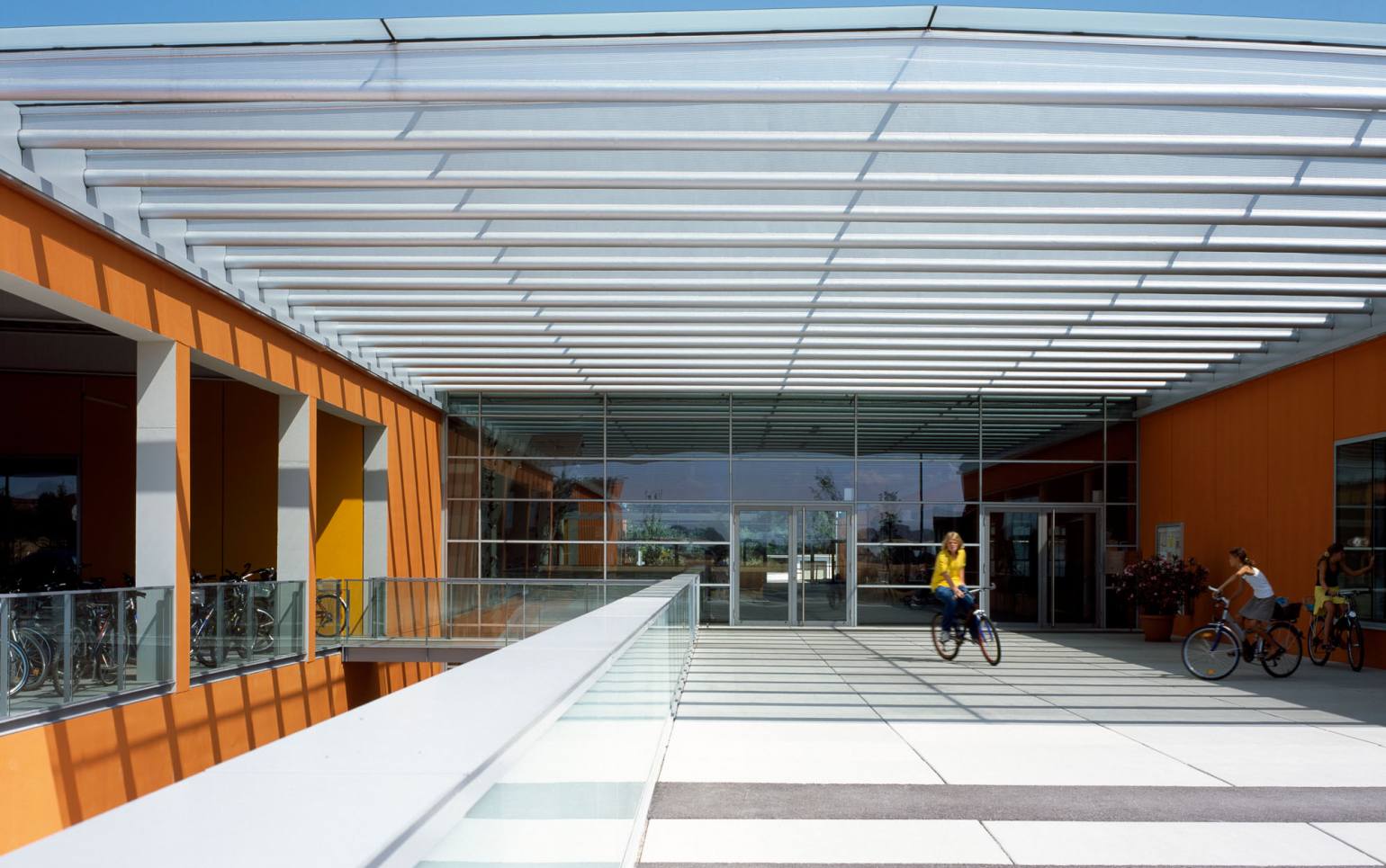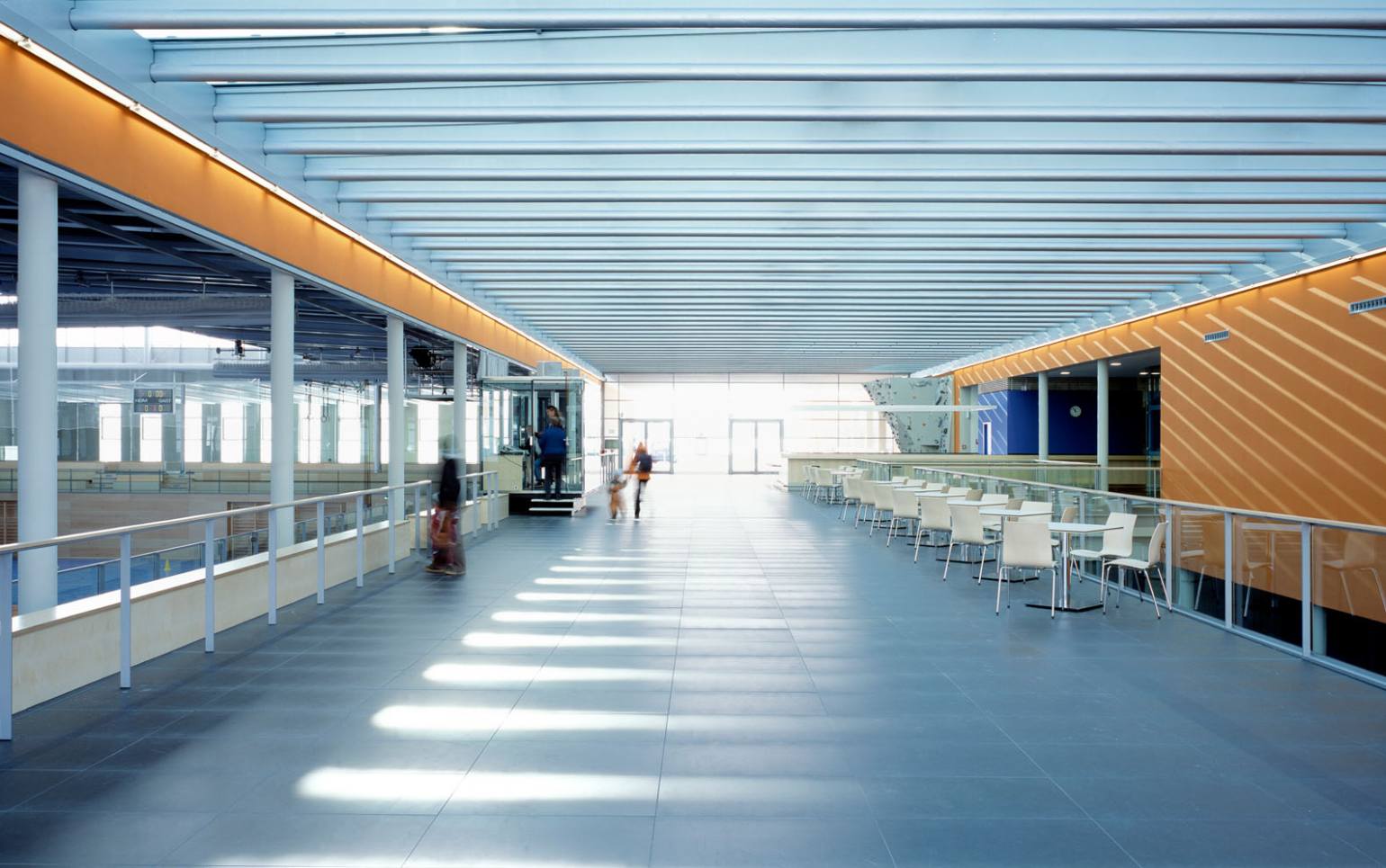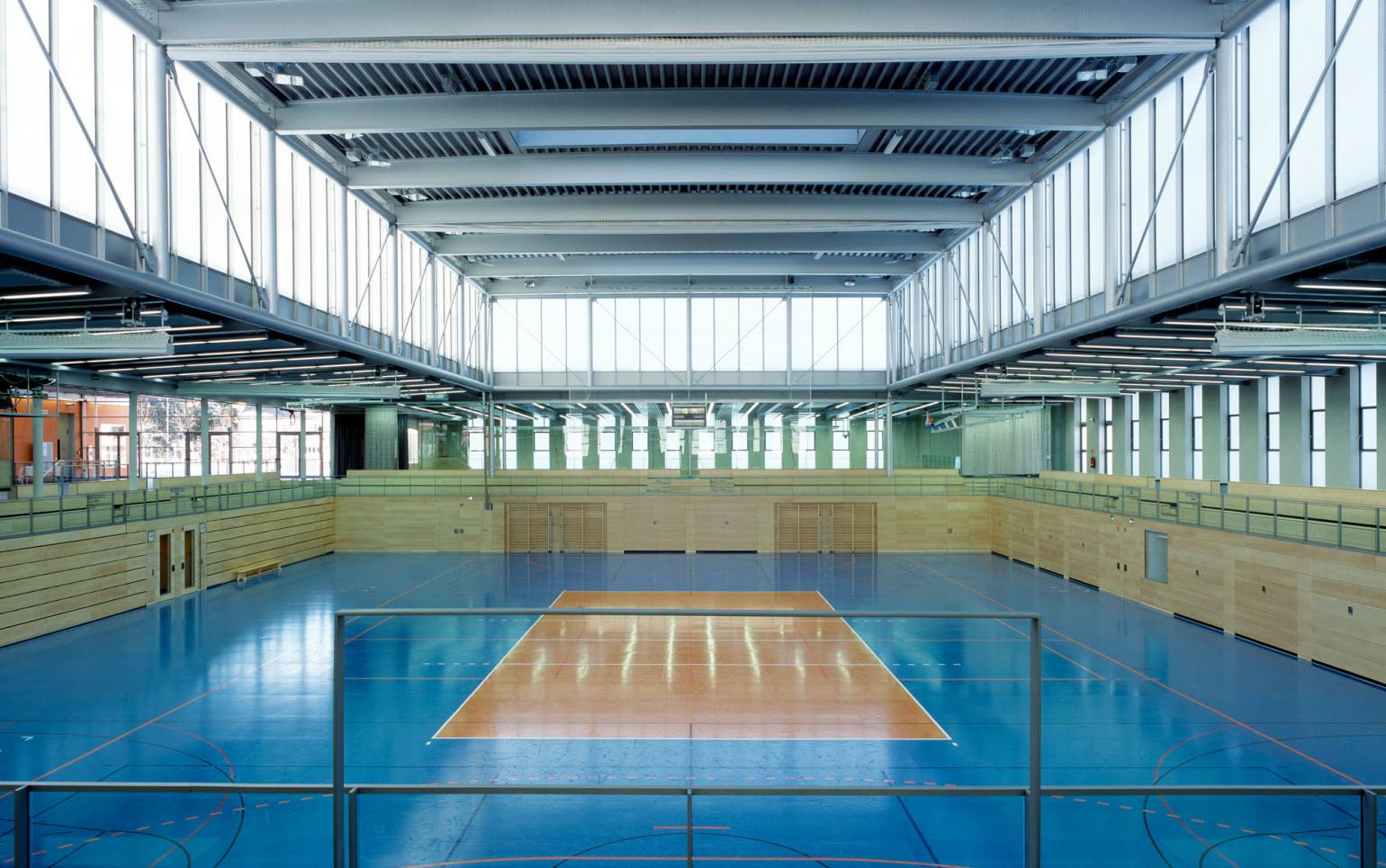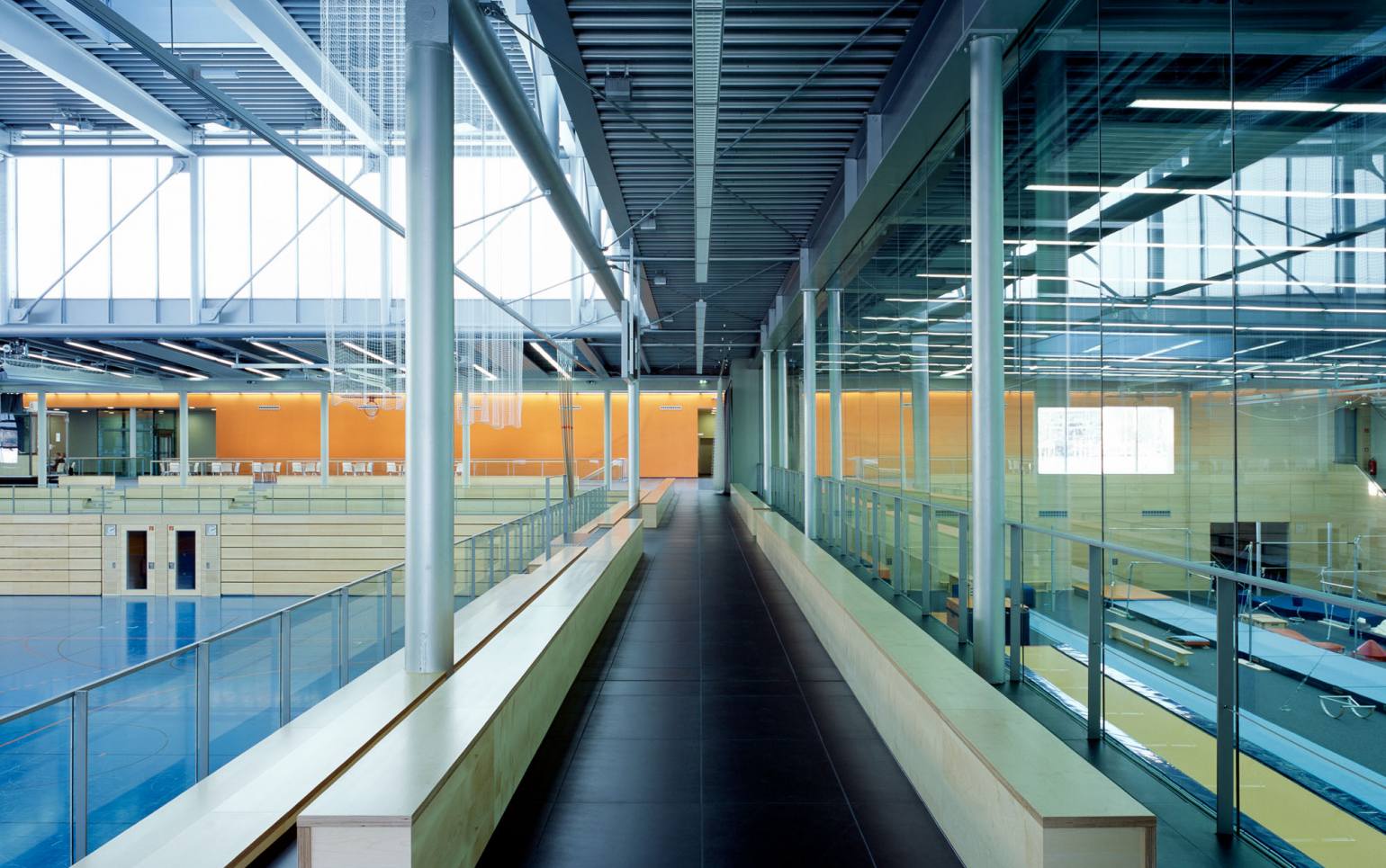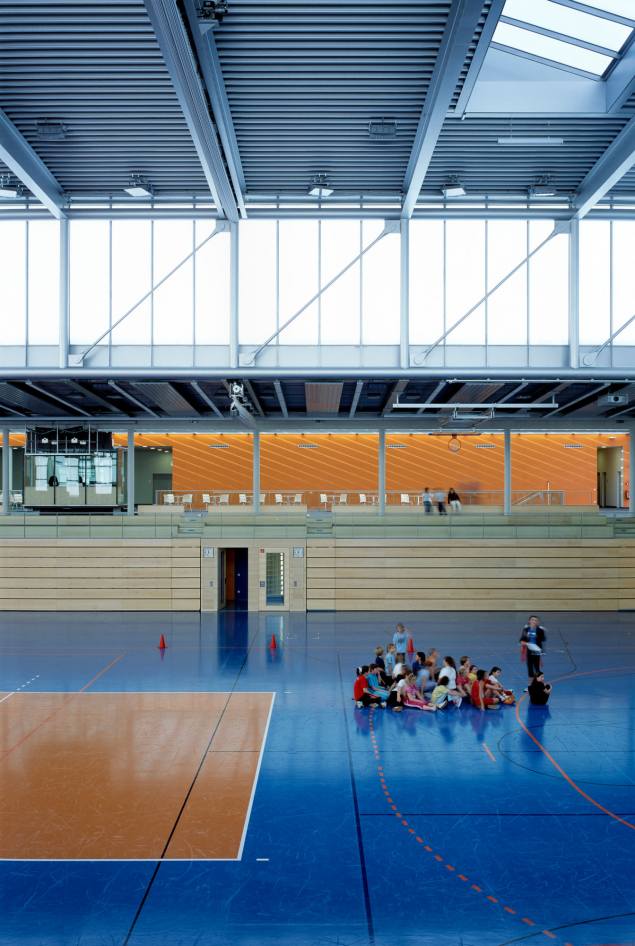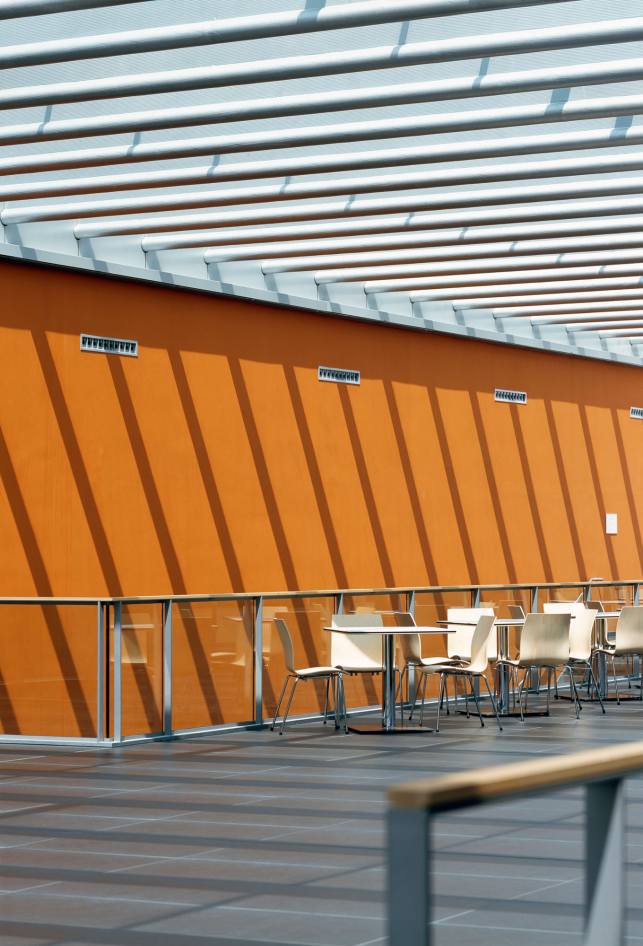Sports Center Am Utzweg, Unterhaching
Client
Gemeinde Unterhaching
Competition 1st prize
2003
Start of Planning - Completion
2004 - 2005
Performance phases
2 - 5
Team
Planning: Birger Bhandary, Karuna Dewan
Building data
Total cost 15,500,000 €
Gross floor area 9,220 m²
The new sports centre is located at the southern edge of Unterhaching. Integration of the large building volume in an area with predominantly low buildings is achieved by accommodation of half of the structure below ground and slight curvature of the outer wall of the building, giving the construction a dynamic flair as well as making it look shorter. Coloured recesses at both sides of the oval ground plan identify the entrances. These lead to the heart of the sports centre: a glass-roofed foyer offering a view of the Alps on a fine day. All the sports halls can be overlooked from there: a central sports hall divisible into three parts, which is flanked by a floor exercise gymnastics hall and a judo hall on one side and an artistic gymnastics hall on the other. The separation of the different areas by high glass walls creates the impression of a large, light-filled sports landscape under one roof. The hall can be used as a venue for all sorts of events. It can accommodate 1,200 spectators, and with a height of 12.5 m, is suitable for international volleyball competitions. A glass "lantern identifies the structure from the outside.
The open foyer with a café and bar area next to the halls is connected to a changing area in the basement through a light well, allowing natural illumination and facilitating orientation. Bridges across the light well lead to multi-purpose rooms to the west of the foyer.
Only a limited number of materials – concrete, steel, glass and profiled glass – determine the design concept of the structure and create a distinctive urban development feature at the outskirts of the town. Demanding energy efficiency requirements are met by making use of geothermal energy, natural weather-protected ventilation, ground heat and a photovoltaic system on the roof.

